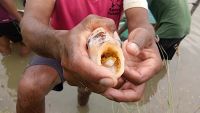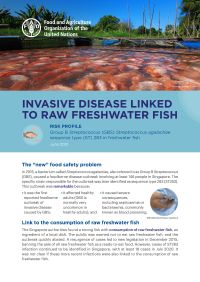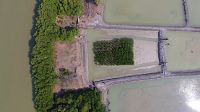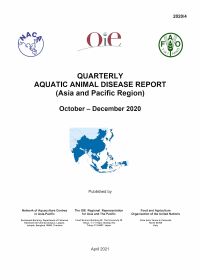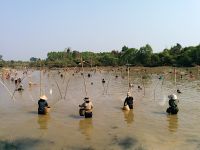The aquaculture of red tilapia is proving to be highly successful due to its attractive colour, faster growth rate and good market demand. Expansion of the industry will depend on adequate supply of quality seed. This article describes the status of red tilapia aquaculture and good practices in broodstock management and nursery rearing using hapa systems and all-male seed production techniques, including hapa installation, breeding, egg collection and related issues.
In 2015, a bacterium called Streptococcus agalactiae, also referred to as Group B Streptococcus (GBS), caused a foodborne disease outbreak involving at least 146 people in Singapore, associated with the consumption of raw freshwater fish. The specific strain responsible for the outbreak was later identified as sequence type 283 (ST283). Invasive GBS ST283 disease is also found in other countries in and around Southeast Asia. FAO has published a fact sheet and a risk profile for GBS ST283, which are available for free download. These documents provide guidance on risk reduction, and practical recommendations for food safety competent authorities.
Over the last five decades, over 30 million people along Java’s north coast have experienced subsidence and subsequent soil erosion. In 2015, Building with Nature Indonesia (BwNI-Demak) started a coastal protection project in 10 communities of nine coastal villages of Demak regency. The protection measures introduced included the use of permeable structures (dams) that successfully capture sediment and support natural recovery of mangroves, and aquaculture field schools, to train small-scale farmers on good aquaculture practices such as low external inputs sustainable aquaculture, associated mangrove aquaculture and multi-trophic srhimp aquaculture.
Join us on 31 May for a free webinar on Culture-based fisheries for rural development, with leading experts from the Asian region. Culture-based fisheries (CBF) are practices to enhance fish stocks in waters that don't have enough natural recruitment to sustain a fishery. CBF practices are usually applied in small water bodies such as village dams and irrigation reservoirs. Fish growth is driven by the natural productivity of the waters, foraging on natural food supplies. The simplicity and low capital requirements of CBF make it easy for farming communities to learn and adopt.
